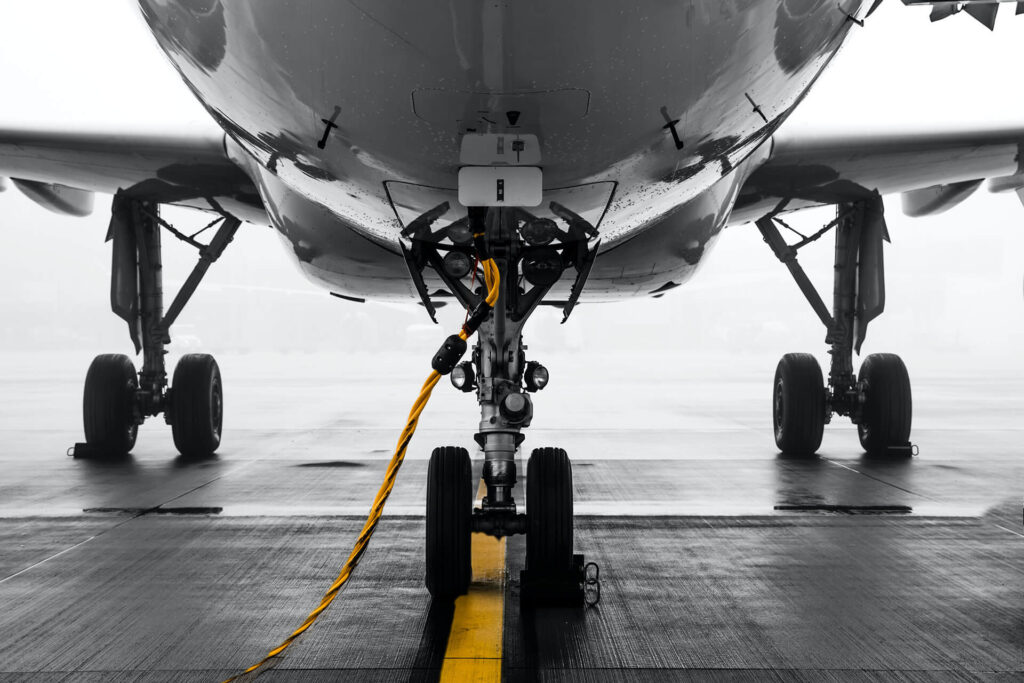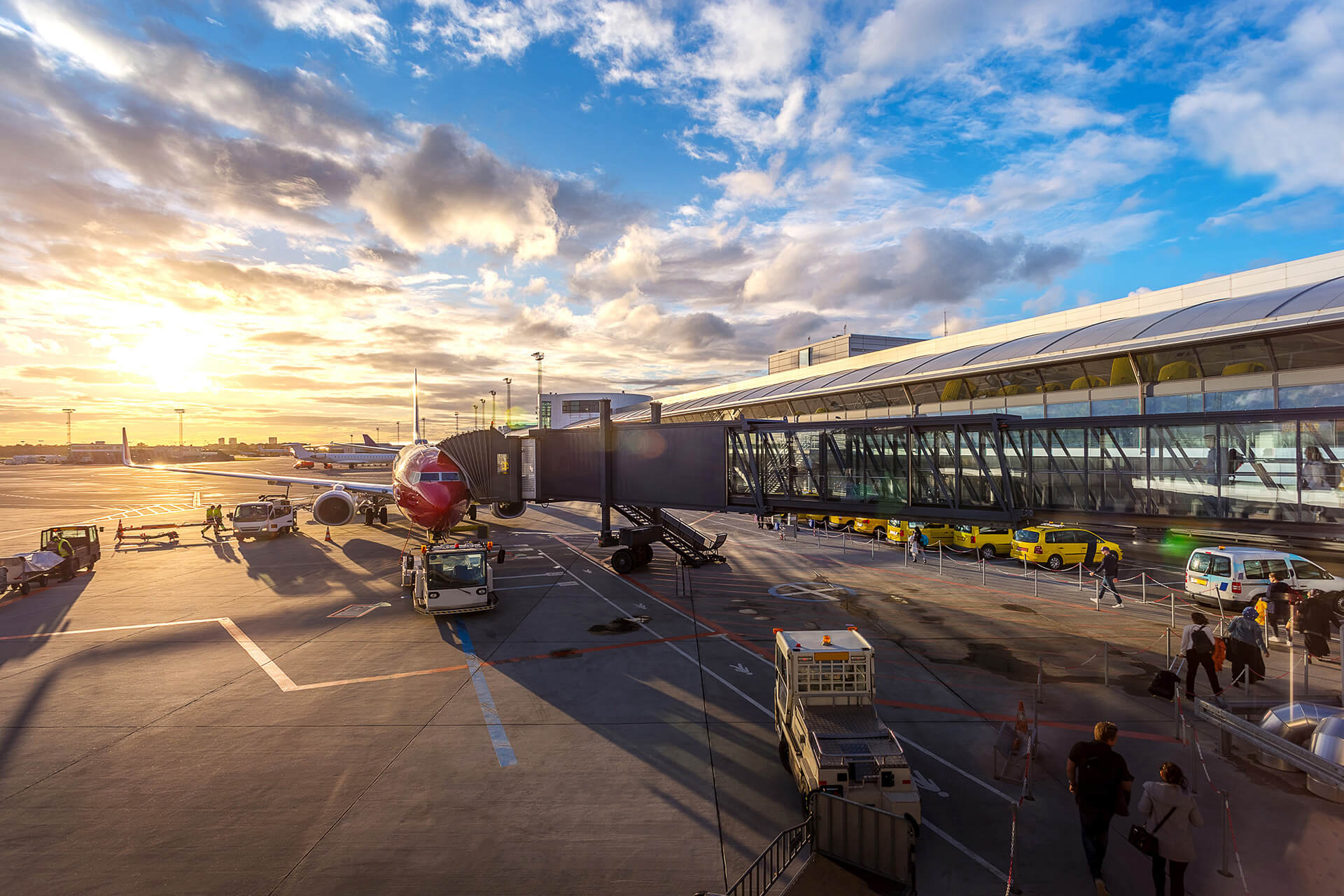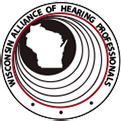In the USA, the National Institute for Occupational Safety and Health (NIOSH) and the Occupational Safety and Health Administration (OSHA) work together to provide standards and regulations for noise in the workplace.
National Institute for Occupational Safety and Health (NIOSH), Occupational Safety and Health Administration (OSHA), Mine Safety and Health Administration (MSHA), Federal Railroad Administration (FRA) have all set standards on hazardous occupational noise in their respective industries.
Each industry is different, as workers’ tasks and equipment differ, but most regulations agree that noise becomes hazardous when it exceeds 85 decibels, for an 8-hour time exposure (typical work shift).
Table of Contents
Noise pollution among the airline industry and among airport workers
Aircraft noise pollution refers to the noise produced by aircraft in flight that has been associated with several negative stress-mediated health effects, from sleep disorders to cardiovascular ones.
Governments have enacted extensive controls that apply to aircraft designers, manufacturers, and operators, resulting in improved procedures and cuts in pollution.
Sound production is divided into three categories:
- Mechanical noise – rotation of the engine parts, most noticeable when fan blades reach supersonic speeds.
- Aerodynamic noise – from the airflow around the surfaces of the aircraft, especially when flying low at high speeds.
- Noise from aircraft systems – cockpit and cabin pressurization and conditioning systems, and Auxiliary Power Units.
On the ground, aircraft engines, takeoff preparations, and braking are sources of noise on aircraft.
When airborne, the aircraft engines and high-speed turbulence over the fuselage are the largest sources of noise on aircraft.
Continue Reading: Noise-Induced Hearing Loss and Tinnitus >
Announcements and mechanical noises from food and beverage service are other sources of noise.
Mechanisms of sound production
Aircraft noise is noise pollution produced by an aircraft or its components, whether on the ground while parked such as auxiliary power units, while taxiing, on run-up from the propeller and jet exhaust, during take-off, underneath and lateral to departure and arrival paths, over-flying while en route, or during landing.
A moving aircraft including the jet engine or propeller causes compression and rarefaction of the air, producing motion of air molecules. This movement propagates through the air as pressure waves. If these pressure waves are strong enough and within the audible frequency spectrum, a sensation of hearing is produced. Different aircraft types have different noise levels and frequencies.
The noise originates from three main sources:
- Engine and other mechanical noise
- Aerodynamic noise
- Noise from aircraft systems
A study of noise on Airbus A321 aircraft reported levels of 60-65 decibels (dBA) before takeoff, 80-85 dBA during flight, and 75-80 dBA during landing.
The outside of aircraft engines (around 140 dB at takeoff) and conditions on other aircraft may have higher or lower noise levels. Sound insulation also varies among aircraft.
Continue Reading: Understanding High and Low-Frequency Hearing Loss >

Source: Pexels
What are the recommended noise levels for airport workers in the airline industry?
It’s recommended that all worker exposures to noise be controlled below a level equivalent to 85 dBA for eight hours to minimize occupational noise-induced hearing loss.
It also recommends a 3 dBA exchange rate so that every increase by 3 dBA doubles the amount of the noise and halves the recommended amount of exposure time.
Hearing loss accumulates over a lifetime. If you are exposed to aircraft noise and have health problems, we can’t tell if it was caused by your work conditions or if it was caused by something else.
Effects of noise exposure among airport workers in the airline industry
- Ear discomfort – May occur during exposure to a 120 dB noise.
- Ear pain – May occur during exposure to a 130 dB noise.
- Eardrum rupture – May occur during exposure to a 140 dB) noise.
- Temporary hearing impairment – Unprotected exposure to loud, steady noise over 90 dB for a short time, even several hours, may cause hearing impairment. This effect is usually temporary and hearing returns to normal within several hours following cessation of the noise exposure.
- Permanent hearing impairment – Unprotected exposure to loud noise (higher than 90dB) for eight or more hours per day for several years, may cause a permanent hearing loss. Permanent hearing impairment occurs initially in the vicinity of 4,000 Hz (outside the conversational range) and can go unnoticed by the individual for some time. It is also important to remember that hearing sensitivity normally decreases as a function of age at frequencies from 1,000 to 6,000 Hz, beginning around age 30.
- Subjective effects – Annoying high-intensity noise can cause distraction, fatigue, irritability, startle responses, sudden awakening, and poor sleep quality, loss of appetite, headache, vertigo, nausea, and impair concentration and memory.
- Speech interference – Loud noise can interfere with or mask normal speech, making it difficult to understand.
- Performance – Noise is a distraction and can increase the number of errors in any given task. Tasks that require vigilance, concentration, calculations, and making judgments about time can be adversely affected by exposure to loud noise higher than 90 dB.
Continue Reading: Noise-Induced Hearing Loss in the Police Force >
How to protect Your hearing in the airline industry?
- Earplugs – Insertable-type earplugs offer a very popular, inexpensive, effective, and comfortable approach to provide hearing protection. To be effective, earplugs must be inserted properly to create an air-tight seal in the ear canal. The wax impregnated moldable polyurethane earplugs provide an effective universal fit for all users and provide 30 to 35 dB of noise protection across all frequency bands.
- Communication headsets – In general, headsets provide the same level of noise attenuation as earmuffs and are also more easily donned and removed that earplugs, but the microphone can interfere with the donning of an oxygen mask.
- Active noise reduction headsets – This type of headset uses active noise reduction technology that allows the manipulation of sound and signal waves to reduce noise, improve the signal-to-noise ratios, and enhance sound quality. Active noise reduction provides effective protection against low-frequency noise. The electronic coupling of a low-frequency noise wave with its exact mirror image cancels this noise.
- Combinations of protection devices – The combination of earplugs with earmuffs or communication headsets is recommended when ambient noise levels are above 115dB. Earplugs,
combined with active noise reduction headsets, provide the maximum level of individual hearing protection that can be achieved with current
technology.
Continue Reading: Types of Hearing Protection >
Hearing Loss Workers Compensation Benefits
Hearing loss workers’ compensation benefits are largely undiscovered benefits covering hearing health care, which is often uninsured. Many health insurance policies and programs like Medicare do not cover hearing aid purchases but workers’ compensation can.
It also pays for the disability of hearing loss just as it does for the loss of eyesight or other injuries.
Aging populations, advances in technology, and greater sensitivity to hearing loss are bringing more attention to financing hearing health care. For the most part, those who qualify for hearing loss workers’ compensation benefits are retired hearing-impaired workers who live on fixed incomes.
Continue Reading: All About Workers’ Compensation >
Always feel free to ask Johnson Law Offices about the process, the law, or an individual case. The legal, medical, and audio-metric questions that come into play in a hearing loss workers compensation claim can be complicated.
The claims require attention to detail mixed with an ability to work well with hearing-impaired retirees and their families, especially spouses, and their hearing health care professionals.
Sources
- https://www.aircrewacademy.com/osh_197
- https://www.faa.gov/about/aerospace_medicine/aircrew/
- https://en.wikipedia.org/wiki/Occupational_noise
- https://europepmc.org/article/med/12024523
- https://www.faa.gov/pilots/safety/pilotsafetybrochures/hearing.pdf
- https://www.castlegroup.co.uk/guidance/noise-at-work-assessments/what-is-leq/
- https://en.wikipedia.org/wiki/Aircraft_noise_pollution
Contact Us
If you, or anyone you know, worked in noise and suffers from hearing loss, please do not hesitate to contact us.
Contact Us


